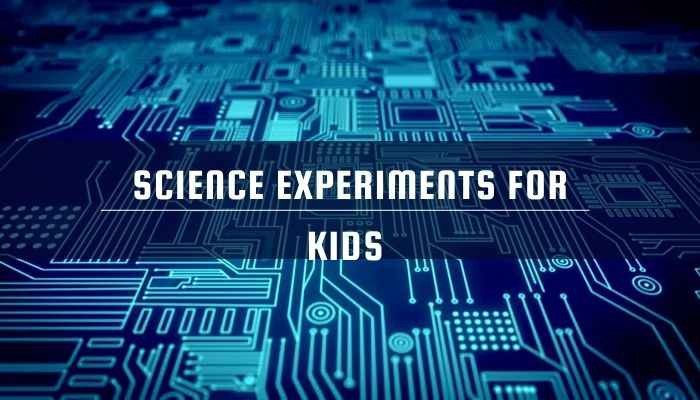Certainly! Here are 21 science project topics suitable for class 10 students:
- Investigating the effects of different fertilizers on plant growth.
- Studying the water purification process using natural materials.
- Analyzing the efficiency of various renewable energy sources (solar, wind, hydro).
- Testing the effectiveness of natural insect repellents.
- Investigating the relationship between exercise and heart rate.
- Examining the effects of different types of music on plant growth.
- Building and testing a simple electric motor.
- Studying the properties of different types of soil.
- Investigating the impact of light exposure on seed germination.
- Analyzing the pH levels of different household liquids.
- Testing the factors affecting the melting rate of ice.
- Studying the effects of temperature on the elasticity of rubber bands.
- Investigating the effectiveness of various natural cleaning agents.
- Building a simple water filtration system.
- Testing the efficiency of different insulation materials.
- Studying the behavior of ants in response to different stimuli.
- Analyzing the effects of different types of food on mold growth.
- Investigating the relationship between magnetism and electricity.
- Building and testing a simple hydraulic system.
- Studying the effects of caffeine on plant growth.
- Investigating the relationship between the size of a parachute and its descent rate.
These topics cover a range of scientific concepts and can be adapted to suit different interests and resources available to students.
Investigating the effects of different fertilizers on plant growth
The objective of this project is to determine the impact of various types of fertilizers on the growth and health of plants.
Materials Needed:
- Several small pots or containers
- Potting soil
- Seeds of a fast-growing plant (such as radish, lettuce, or beans)
- Different types of fertilizers (organic and synthetic)
- Watering can or spray bottle
- Measuring spoons
- Labels or markers for labeling pots
- Notebook and pen for recording observations
Procedure:
- Prepare the pots by filling them with potting soil, leaving about an inch of space at the top.
- Label each pot with the type of fertilizer it will receive.
- Plant seeds in each pot according to the instructions on the seed packet.
- Water the pots evenly and ensure they receive adequate sunlight or artificial light.
- Follow the instructions for each fertilizer type and apply them to the corresponding pots at regular intervals (e.g., weekly).
- Record observations daily or weekly, noting the growth rate, color of leaves, overall health of the plant, and any other relevant factors.
- Measure and record the height of each plant at regular intervals (e.g., weekly) to track growth progress.
- Compare the growth and health of plants in each pot over the course of the experiment.
Analysis:
- Analyze the data collected throughout the experiment, including plant height measurements and observational notes.
- Identify any trends or patterns in plant growth and health among the different fertilizer treatments.
- Evaluate which fertilizer(s) resulted in the healthiest and most vigorous plant growth.
- Consider factors such as cost, environmental impact, and ease of application when determining the most effective fertilizer option.
Conclusion:
Summarize the findings of the experiment and draw conclusions regarding the effects of different fertilizers on plant growth. Discuss any practical applications or implications of the results and suggest areas for further research or experimentation.
Presentation:
Prepare a presentation summarizing the project, including the research question, methodology, results, and conclusions. Use visual aids such as graphs or charts to illustrate key findings and support your conclusions. Be prepared to answer questions from classmates or judges during the presentation.
This project provides a hands-on opportunity for students to explore the principles of plant growth and the impact of fertilizers on agricultural practices.
Studying the water purification process using natural materials
Studying water purification using natural materials is both fascinating and essential, especially considering the increasing need for sustainable and accessible water treatment methods. Here’s a general outline of the process:
- Understanding Contaminants: Before diving into purification methods, it’s crucial to identify the contaminants present in the water. Common contaminants include bacteria, viruses, heavy metals, organic compounds, and suspended solids.
- Selection of Natural Materials: Natural materials such as sand, gravel, activated carbon, clay, and certain plants have been traditionally used for water purification due to their ability to filter out impurities or chemically bind to contaminants.
- Filtration: Filtration is one of the primary methods used in water purification. Layers of natural materials like sand and gravel can be arranged to filter out larger particles and impurities as water passes through them. This process can physically remove suspended solids and some microorganisms.
- Adsorption: Certain natural materials, such as activated carbon derived from charcoal, have a high surface area and can adsorb contaminants onto their surfaces. This method is effective for removing organic compounds, chlorine, and some heavy metals.
- Ion Exchange: Some natural materials, like zeolites, have a crystalline structure that can exchange ions with contaminants in the water. This process is useful for removing heavy metals and certain ions like hardness ions (calcium and magnesium).
- Biological Processes: Some plants and microorganisms have natural abilities to purify water. Aquatic plants like water hyacinths and duckweed can absorb nutrients and heavy metals from water. Additionally, certain bacteria can biodegrade organic pollutants through natural processes.
- Solar Disinfection: Utilizing natural sunlight is another method for water purification. Exposing water to sunlight in transparent containers can kill bacteria and other pathogens through UV radiation and thermal effects.
- Testing and Monitoring: Throughout the purification process, it’s essential to regularly test the water quality to ensure that the desired contaminants are effectively removed and that the purified water meets safety standards.
- Scale-up and Optimization: Once a promising purification method is identified, researchers may work on scaling up the process for real-world applications. This involves optimizing parameters such as flow rates, contact times, and material characteristics to achieve efficient and cost-effective purification.
- Integration with Existing Systems: Finally, integrating natural purification methods with existing water treatment infrastructure or developing standalone systems for communities without access to centralized water treatment facilities is essential for practical implementation.
By studying and refining the water purification process using natural materials, researchers can develop sustainable and affordable solutions to address water quality challenges globally.
Analyzing the efficiency of various renewable energy sources (solar, wind, hydro)
Analyzing the efficiency of various renewable energy sources involves considering multiple factors such as resource availability, conversion efficiency, environmental impact, and cost-effectiveness. Here’s a brief analysis of solar, wind, and hydro energy:
- Solar Energy:
- Efficiency: Solar photovoltaic (PV) systems typically have an efficiency range of 15% to 22%, meaning they can convert 15-22% of sunlight into electricity.
- Resource Availability: Solar energy is abundant in most regions, especially in areas with high levels of sunlight.
- Environmental Impact: Solar panels produce no greenhouse gas emissions during operation but can have some environmental impact during manufacturing and disposal.
- Cost: The cost of solar panels has been decreasing steadily, making solar energy increasingly competitive with fossil fuels.
- Wind Energy:
- Efficiency: Wind turbines have a typical efficiency range of 30% to 45%, depending on factors like turbine design and wind speed.
- Resource Availability: Wind energy requires science-sufficient wind speeds, typically found in coastal areas and open plains.
- Environmental Impact: Wind turbines have minimal greenhouse gas emissions during operation but can impact local wildlife jobs and landscapes.
- Cost: Onshore wind has become one of the cheapest sources of electricity in many regions, and offshore wind costs are also decreasing with technological advancements.
- Hydroelectric Energy:
- Efficiency: Hydroelectric power plants can have high efficiency, often exceeding 90%, as they directly convert the kinetic energy of flowing water into electricity.
- Resource Availability: Hydroelectric power depends on the availability of flowing water, usually from rivers or dams.
- Environmental Impact: Large-scale hydroelectric projects can have significant environmental impacts, including habitat disruption and alteration of river ecosystems.
- Cost: Initial construction costs for hydroelectric dams can be high, but once operational, hydroelectric power is relatively inexpensive and has low operating costs.
Overall, each renewable energy source has its advantages and limitations. Solar and wind energy are widely available and have relatively low environmental impacts, while hydroelectric power offers high efficiency but can have significant environmental and social consequences. The choice of renewable energy source depends on factors such as geographical location, resource availability, economic considerations, and environmental considerations.




